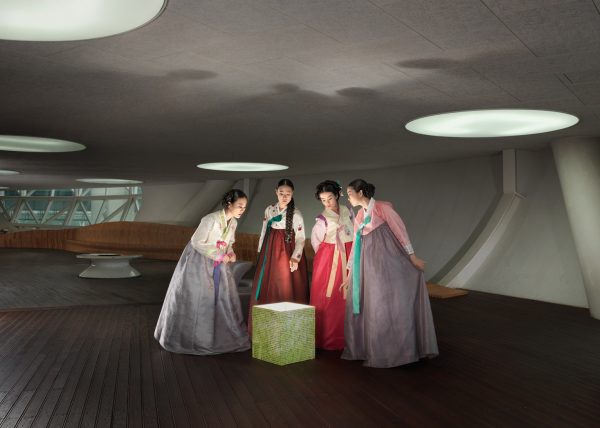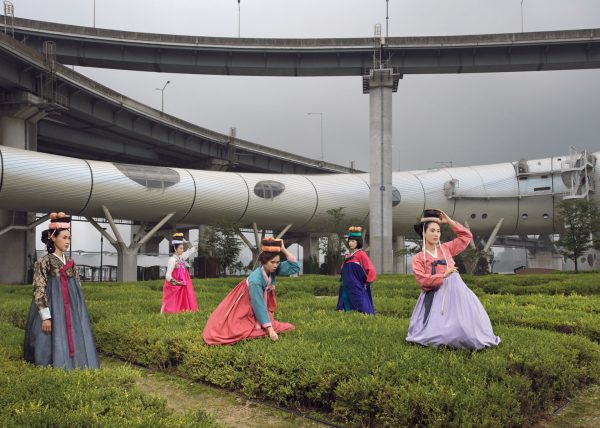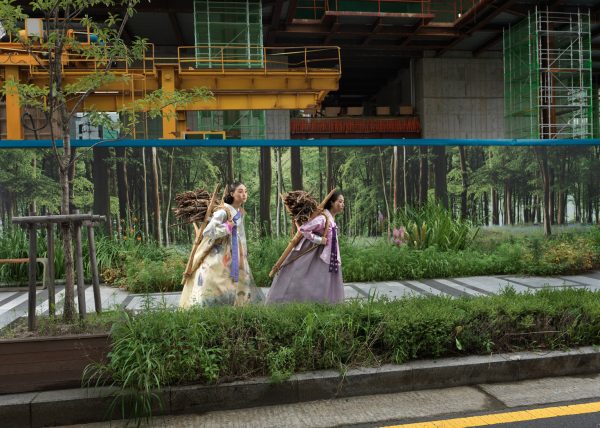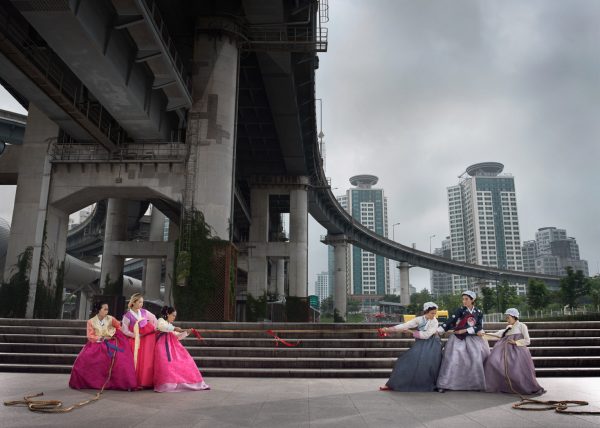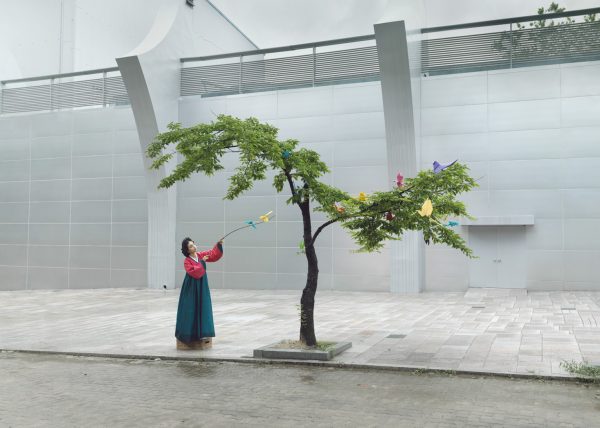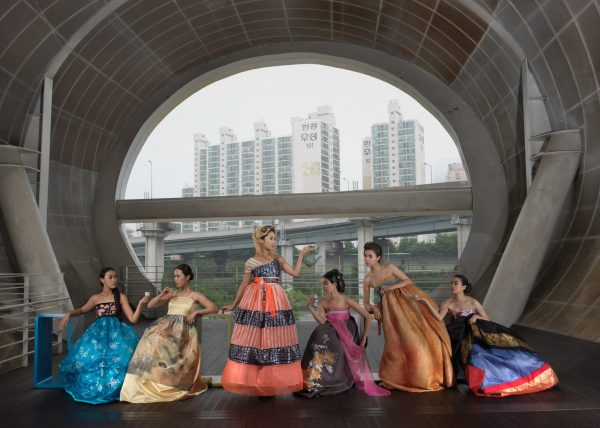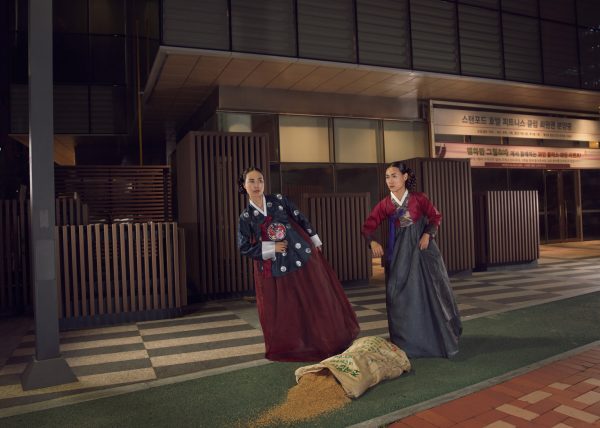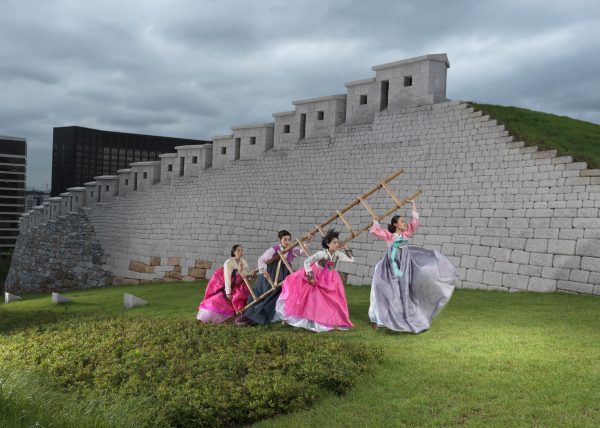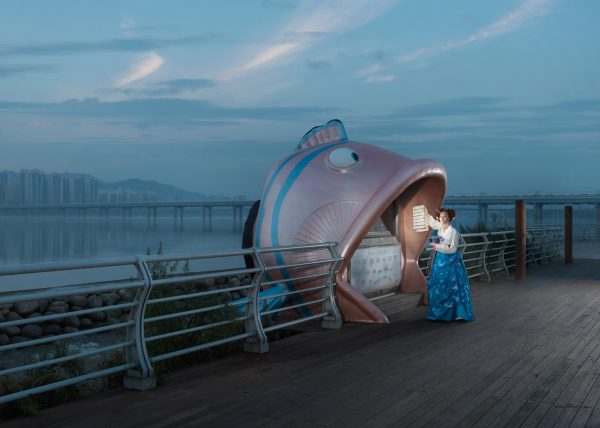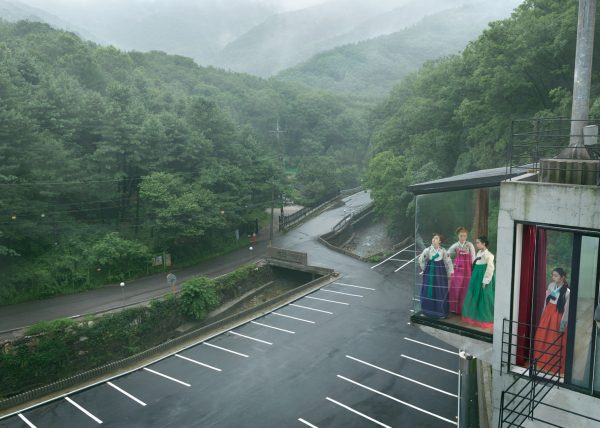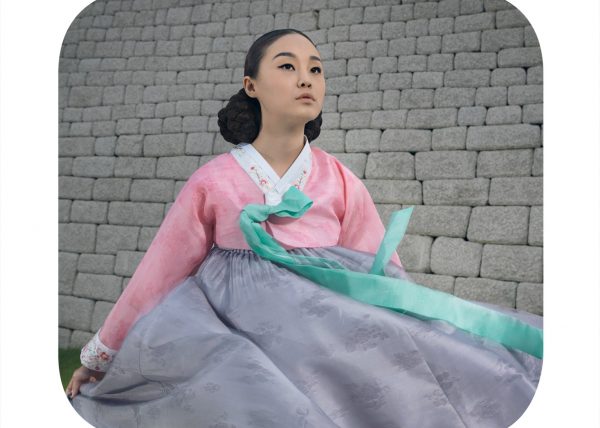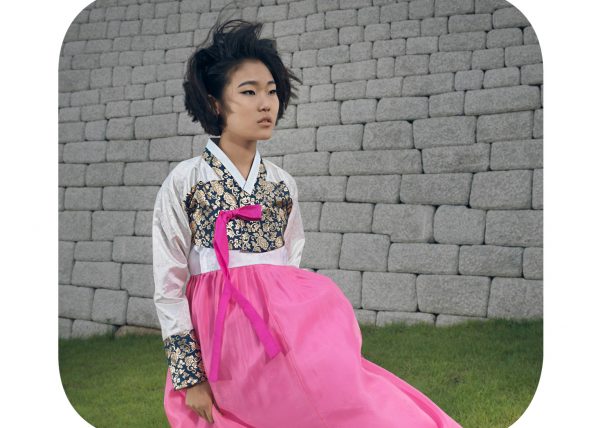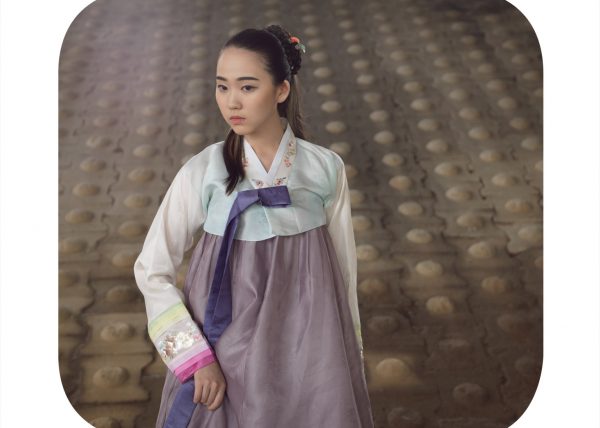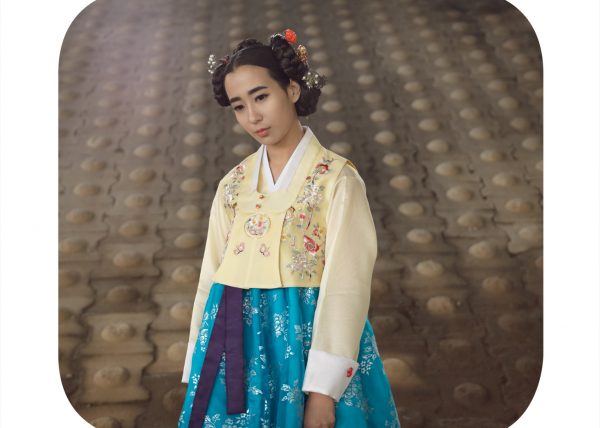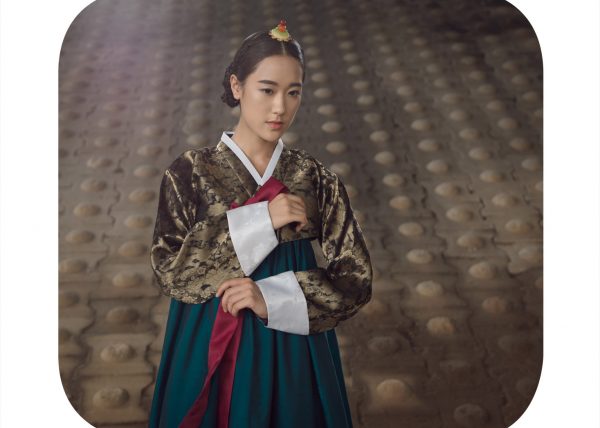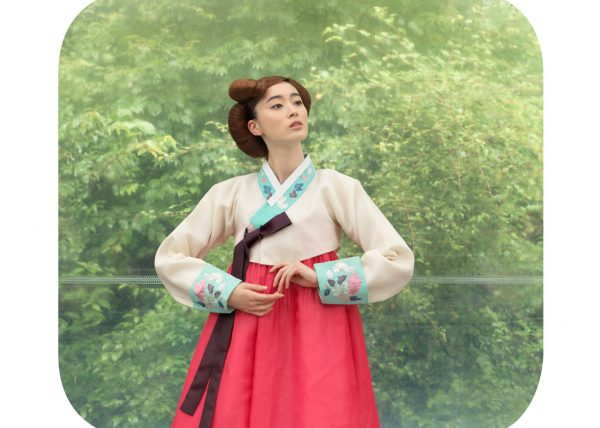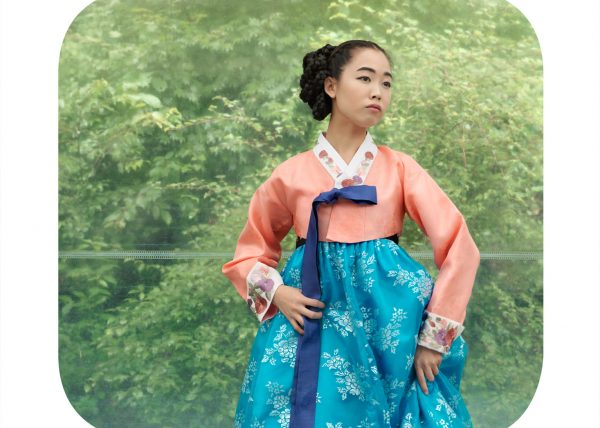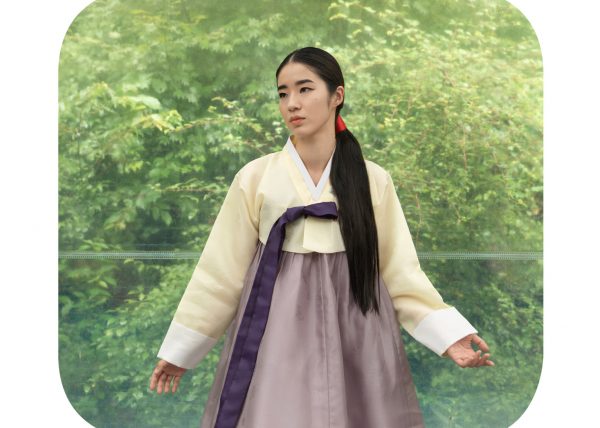
Korea, 2013 In this series of images, I have posed street-cast young Korean women dressed in the traditional Hanbok against a backdrop of Seoul's modern austere architecture. The settings illustrate the country's history, its cultural traditions, and the political tensions between South and North Korea. Hanbok is a centuries old traditional apparel unique to Korea. Hanbok is brilliant with bright colourings, but subdued in its flowing lines and the way it hides the body shape. As it was a common form of attire throughout the ages, in the past the upper classes wore jewellery to separate themselves from the common people. Nowadays Hanbok is often worn during national holidays and on festive occasions, although I was also told that some high schools have recently adopted it for their school uniforms. In the past women wore wigs, but today they wear their hair tightly knotted high on their head or loose, both held in place with a long pin. Korea was a single, independent kingdom for many thousands of years, with its own traditional architecture, works of art, and customs. Korea was occupied by Japan from 1910 to 1945. When Japan was defeated at the end of WWII Korea was split into two separate nations, South Korea and North Korea. On June 25, 1950, North Korea invaded South Korea, starting a bloody war that lasted more than 3 years and involving more than 20 countries. My image "Rickshaw" reflects back on these troubled periods in Korea's history. A simple rope was used as a prop in "Tug of War" to symbolise the continuing political struggles between South and North Korea. My lighting uses a combination of natural and artificial light, which gives the images a cinematic effect. In the instance of the portraits the beauty and poses of the models wearing Hanbok was sufficient to give flashbacks to the past. In other scenes I used simple props to contrast with the traditional dress, see "Firewood" and "Grain" and the racquets in 'Badminton', which is a very popular folk sport and one in which Koreans excel in international competitions. 'Ikebana' is also a favoured pastime, here the folded paper shapes are used to decorate a tree. In Korea, gifts are very important. Wrapping the gift is very important €“ red, yellow and pink paper can be used; green, however, is not recommended. The women in my image "Present" are looking aghast at the present on the floor, which was wrapped in green paper. I was told before I left London for my visit to Korea that it was the monsoon season there. Not having encountered a monsoon season before, I didn't really know what to expect. I learned quite soon that it means incredibly heavy, flash rain-storms, and a humidity of 90% combined with high temperatures. Sadly six people died in a river near where we were shooting. Some of the locations got flooded, but had dried out in the very short the time before we started shooting, otherwise it would have been impossible!
